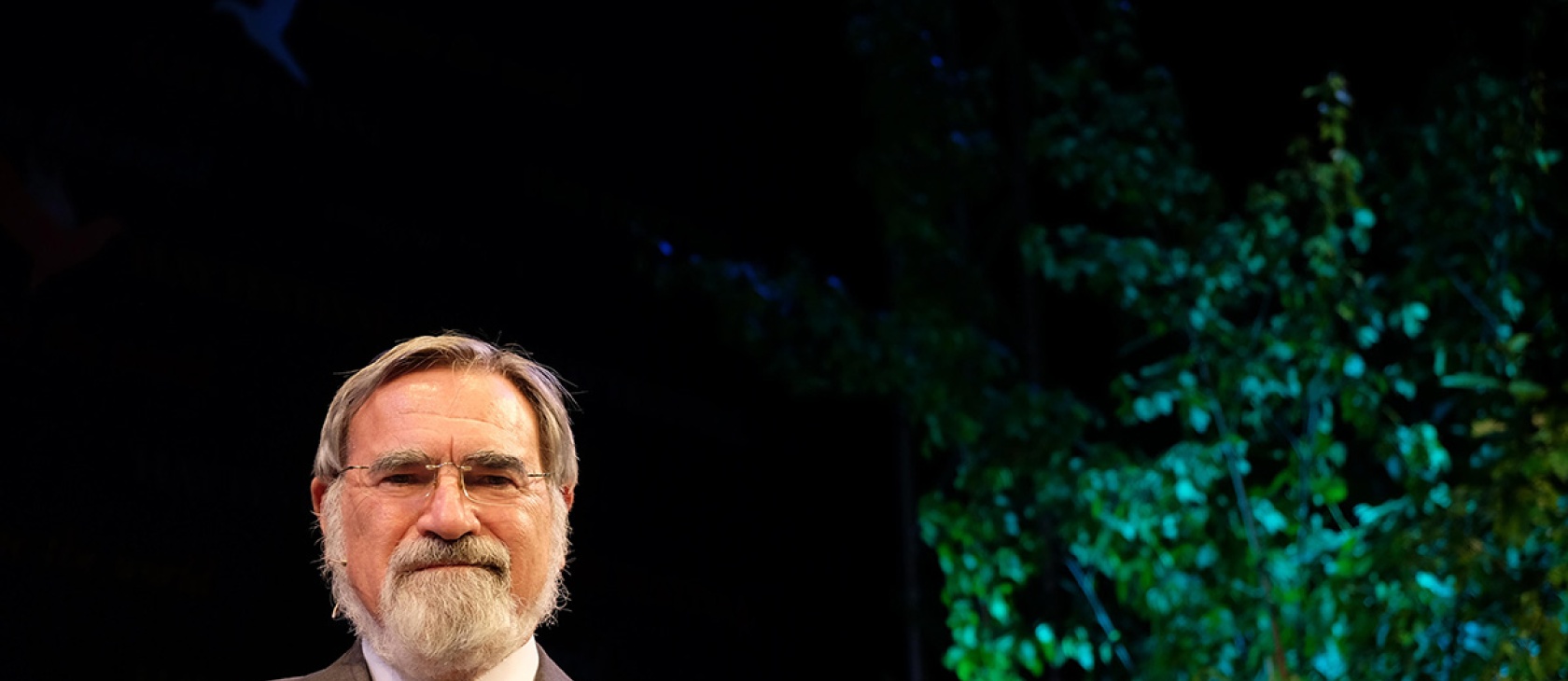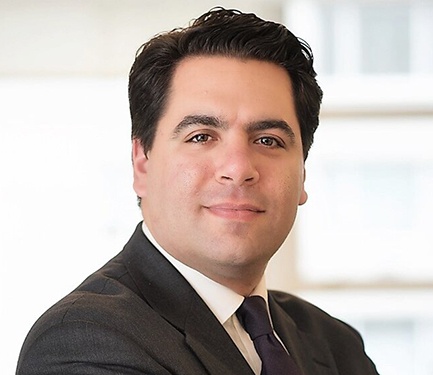In October 1798, the president of the United States wrote to officers of the Massachusetts militia, acknowledging a limitation of federal rule. “We have no government,” John Adams wrote, “armed with power capable of contending with human passions unbridled by morality and religion. Avarice, ambition, and revenge or gallantry, would break the strongest cords of our Constitution as a whale goes through a net.” The nation that Adams had helped to found would require the parts of the body politic to be held in equipoise, with the liberation of popular will and the democratic exercise of political power exerting forces in one direction, and a people made fit for self-government by the sacred strictures of biblical religion exerting a countervailing force. American politics would summon up the natural human drives for self-interest, and widely shared forms of biblical faith would chasten them. “Our Constitution” Adams explained, “was made only for a moral and religious people. It is wholly inadequate to the government of any other.
This essay is taken from the “In the Liberal Tradition” column of the Fall 2023 issue of Religion & Liberty.
Freedom, the capacity for self-rule at the heart of the American ideal, thus expresses itself ambiguously. At times, liberty seemed a natural right, endowed to all men by their Creator. But other voices, not least Adams’, suggested that liberty was not a right but a precious and hard-won achievement, the result of moral formation, a learned discipline that draws on classical and biblical resources considerably older than the American constitutional order. Two centuries after Adams’ letter to the officers of the Massachusetts militia, at the dawn of a new geopolitical and technological age, no one would convey that older and more capacious understanding of human freedom more eloquently than the British lord and chief rabbi of the United Kingdom, the late Jonathan Sacks.
Born in 1948 in London to a striving, merchant family, Sacks would distinguish himself in school and eventually begin his higher education in moral philosophy at Cambridge University. During his college days, in June 1967, Israel repelled attacks from the armies of Egypt, Syria, and Jordan and, over the course of six days, won a decisive military victory. But throughout that brief, dramatic war, global Jewry was gripped by the prospect of another genocidal catastrophe not yet two decades removed from the Shoah. In battle reports and news bulletins from the Middle East, Sacks heard whispers of destiny. Stimulated to search out deeper Jewish purposes, he would, the following summer, take a two-month trip to the United States that would change the trajectory of his life.
In America, he met two of the most consequential rabbinic leaders of the postwar era: Rabbi Joseph B. Soloveitchik, the brilliant intellectual leader of modern Orthodox Judaism, whose writing and teaching focused on the relations of Jewish law to the modern philosophical condition, and Rabbi Menachem Mendel Schneerson, the spiritual leader of the Hasidic Lubavitch dynasty, whose emissaries carried the infrastructure of religious life to Jewish communities all over the world. It was the Lubavitcher Rebbe, as Schneerson is known, who inspired Sacks to pursue his rabbinic ordination and dedicate himself to the Jewish people. These encounters would influence Sacks’ intellectual sensibility and approach to Jewish institutional leadership for the rest of his career.
Returning from America to England, Sacks continued to pursue his study of moral philosophy under some of the great men of the time, including Roger Scruton at Oxford and Bernard Williams at Cambridge. The late 1970s were also the years in which his rabbinic career began in earnest. Following his ordination in 1976, he received his first pulpit two years later. In the 1980s he held a number of rabbinic and academic appointments, culminating in his elevation, in 1991, to the chief rabbinate.
Sacks’ most succinct presentation of Jewish religious life can be found in his 2001 A Letter in the Scroll.
Since the United States does not have a chief rabbi, the office and its significance are unfamiliar to many American readers. The historical origins of the role can be traced to the Middle Ages, when Jewish communities required not only a legal decisor and religious authority for internal matters but also a representative who could mediate between the community and political rulers. America never developed a parallel structure; its tradition of disestablished religion and culture of free competition among religions made such a quasi-governmental appointment inapt.
When named Chief Rabbi of the United Hebrew Congregations of the Commonwealth, Sacks was the 10th such rabbi since the office was established in Britain in 1704, and the sixth since it was formalized in 1845. In his installation address, Sacks called for “A Decade of Jewish Renewal” and set about reversing the trend of religious recession with a relentless focus on improving education for rabbis and their congregants. As the first chief rabbi born after the Shoah and the establishment of Israel, Sacks was therefore also the first chief rabbi shaped by a marked change in Jewish history. Before the 1940s, Europe was the home not only of most Jewish communities but also of Jewish scholarship and cultural achievement. After the catastrophe that befell European Jewry in the early and mid-1940s, and the astounding achievement of Zionism in the late 1940s, the center of Jewish gravity had migrated away from Europe and by the 1990s could be found in the United States and Israel. One consequence of that shift was that Jewish communal attitudes were less doleful, more confident, and Sacks’ early years in the chief rabbinate captured some of the reflected gleams of vitality from New York and Jerusalem to inspire the Jewish communities of Britain. Sacks’ most succinct presentation of Jewish religious life can be found in his 2001 A Letter in the Scroll.
An example of Sacks’ channeling and accelerating late-20th-century Jewish confidence could be seen in his efforts to speak beyond the Jewish community to the British nation. A decade into his chief rabbinate, Sacks had established himself as a public voice—in radio broadcast and print journalism—who spoke with conviction about the moral dimension of big public questions, including marriage and the family, and who offered a high-minded defense of religious pluralism (a strain of his thought for which Jewish communities to his theological right sometimes criticized him). The trust he was building during these years with the British public would make him one of the most influential respondents to the 9/11 attacks. In his 2002 The Dignity of Difference, Sacks would frame the threat of Islamism in religious terms and propose on behalf of Judaism and Christianity a religious response, insisting thereby that the West’s return to history involved the strengthening of its own spiritual and religious foundations.
Sacks’ 2007 The Home We Build Together: Recreating Society turned his angle of vision away from the clash of civilizations and toward instead the fraying fabric of American and European societies. Diagnosing the roots of social fragmentation and the defects of multiculturalism, Sacks proposed a political theory inspired by the Hebrew Bible and the sociology of Alexis de Tocqueville that promised to preserve the identities of cultural distinctiveness while also strengthening the communal and civic bonds that build society up.
Traditionalist Christians find themselves to be unconventional minorities. They find themselves to be, in other words, like Jews.
Sacks would publish over 40 books throughout his life, with posthumous collections still appearing. Many of the ideas in these books first saw the light of day in Sacks’ innumerable public speeches. He was an exceptional orator, and two speeches he delivered in 2013 and 2014—as it happens, each of them to non-Jewish audiences—may in time emerge as his most consequential. Six weeks after stepping down from the chief rabbinate, Sacks delivered the Erasmus Lecture, hosted by First Things magazine in New York. “On Creative Minorities” is a Jewish message to Christian America, and it begins from the fact that Christian culture is no longer the prevailing norm in the United States. The influence of the Christian moral vision on America is fading, he argued, and the arbiters and elite figures in American culture often dismiss or despise it. Christian principles no longer define America’s cultural conventions, and so traditionalist Christians find themselves to be unconventional minorities. They find themselves to be, in other words, like Jews. And the cultural resources Jews have developed can now be offered up to our Christian cousins in friendship and solidarity. Rather than turn inward and retreat into Benedictine communities of isolation and withdrawal, Sacks conveyed the approach of Jeremiah. Christians can “preserve their identity … while at the same time pursue the common good whose culture and religious beliefs are entirely opposed to their own; and they could achieve this twin, very difficult task of integration without assimilation.”
The next year, under the auspices of Pope Francis, Sacks delivered the keynote address at the Vatican’s International Colloquium on “The Complementarity of Man and Woman.” It is, in my view, the best articulation of and apology for the traditional view of sex and gender that has been given since the cultural onslaught of that traditional view began in earnest. The speech is entirely affirmative, and without criticizing unorthodox views of gender, it nevertheless celebrates what makes the traditional family “a work of high religious art.” It is the miraculous institution that, in Sacks’ words, brings together:
sexual drive, physical desire, friendship, companionship, emotional kinship and love, the begetting of children and their protection and care, their early education and induction into an identity and a history. Seldom has any institution woven together so many different drives and desires, roles and responsibilities. It made sense of the world and gave it a human face, the face of love.
Taken together, these two speeches suggest precisely what is needed for freedom in America to rebound: we must recover the arts of family formation, which not only bring love and life into society but also impress upon parents the sort of generational perspective they need to take responsible civic action. And we must be willing to do this in opposition to a culture that has mistaken liberty for license and that encourages us either to indulge shallow pleasures or at least to dull our pains. Sacks can help us recover the biblical truth that it is possible to erect structures of inner freedom even on the shores of Babylon.




